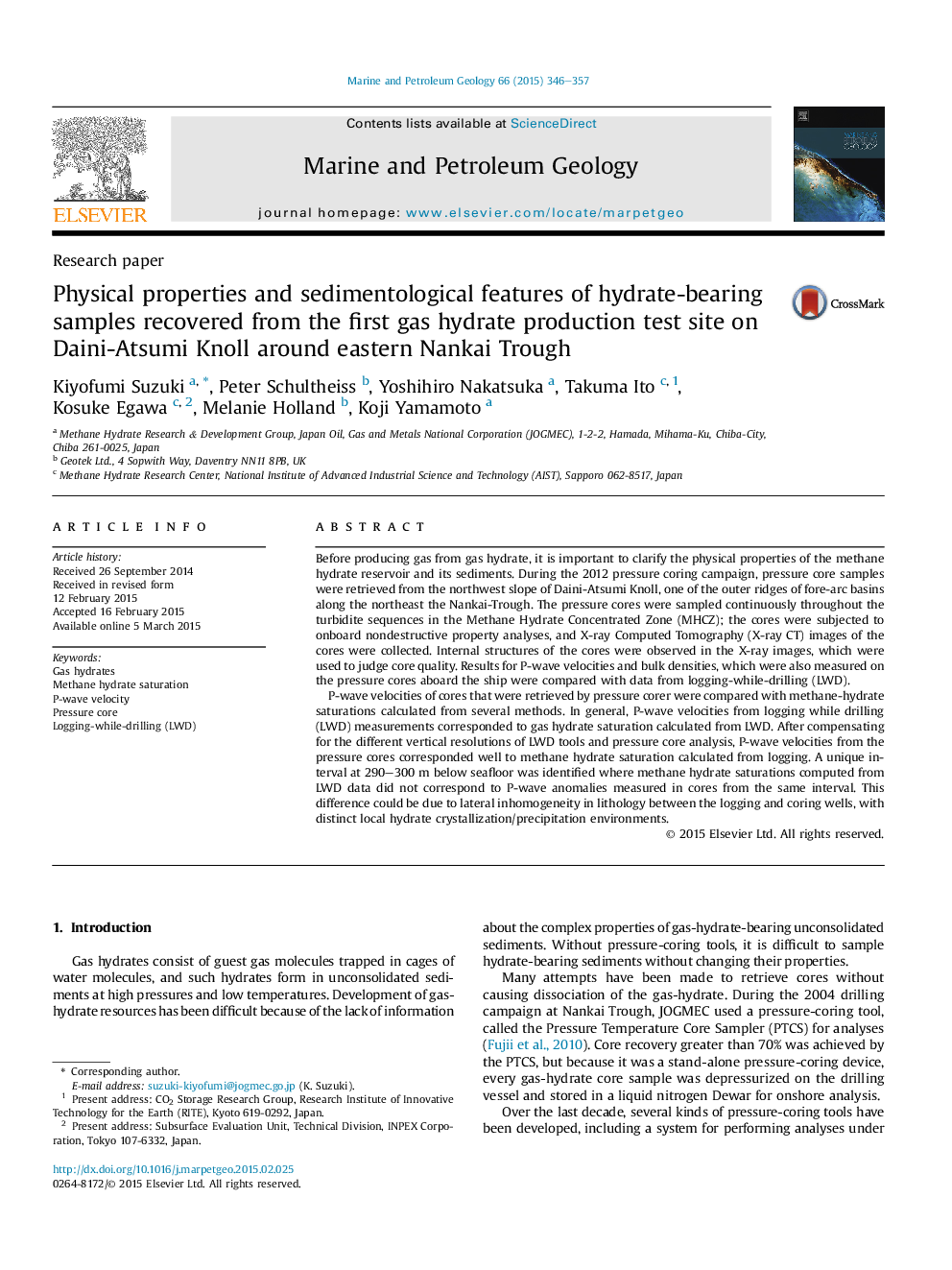| Article ID | Journal | Published Year | Pages | File Type |
|---|---|---|---|---|
| 6435006 | Marine and Petroleum Geology | 2015 | 12 Pages |
â¢Porosities of pressure cores were in good agreement with those from LWD data.â¢Sediments in which P-wave velocities surpassed 1800 m/s contained methane hydrate.â¢P-wave velocities were corresponding with methane hydrate saturations, excepting 290-300 mBSF.
Before producing gas from gas hydrate, it is important to clarify the physical properties of the methane hydrate reservoir and its sediments. During the 2012 pressure coring campaign, pressure core samples were retrieved from the northwest slope of Daini-Atsumi Knoll, one of the outer ridges of fore-arc basins along the northeast the Nankai-Trough. The pressure cores were sampled continuously throughout the turbidite sequences in the Methane Hydrate Concentrated Zone (MHCZ); the cores were subjected to onboard nondestructive property analyses, and X-ray Computed Tomography (X-ray CT) images of the cores were collected. Internal structures of the cores were observed in the X-ray images, which were used to judge core quality. Results for P-wave velocities and bulk densities, which were also measured on the pressure cores aboard the ship were compared with data from logging-while-drilling (LWD).P-wave velocities of cores that were retrieved by pressure corer were compared with methane-hydrate saturations calculated from several methods. In general, P-wave velocities from logging while drilling (LWD) measurements corresponded to gas hydrate saturation calculated from LWD. After compensating for the different vertical resolutions of LWD tools and pressure core analysis, P-wave velocities from the pressure cores corresponded well to methane hydrate saturation calculated from logging. A unique interval at 290-300Â m below seafloor was identified where methane hydrate saturations computed from LWD data did not correspond to P-wave anomalies measured in cores from the same interval. This difference could be due to lateral inhomogeneity in lithology between the logging and coring wells, with distinct local hydrate crystallization/precipitation environments.
